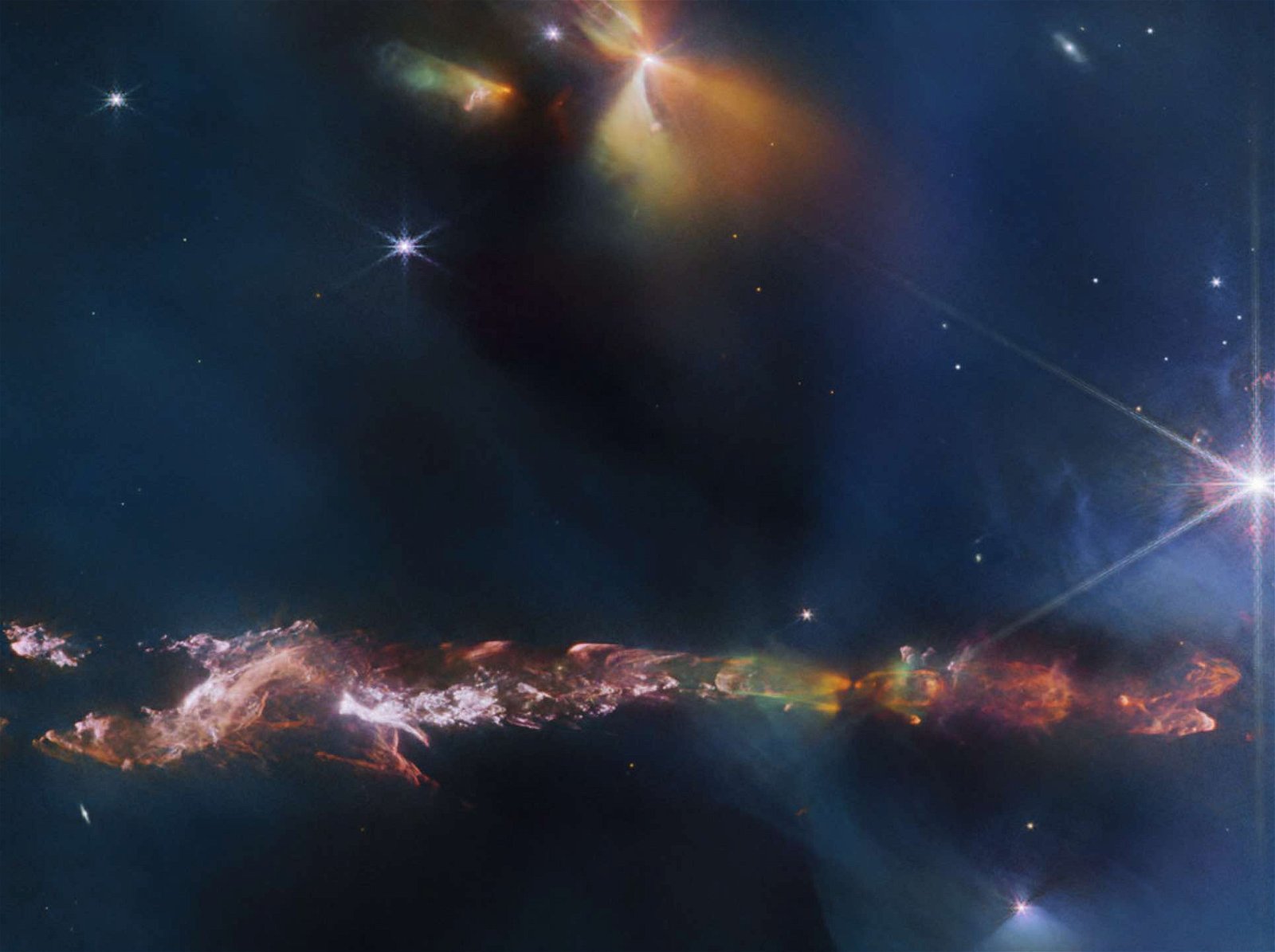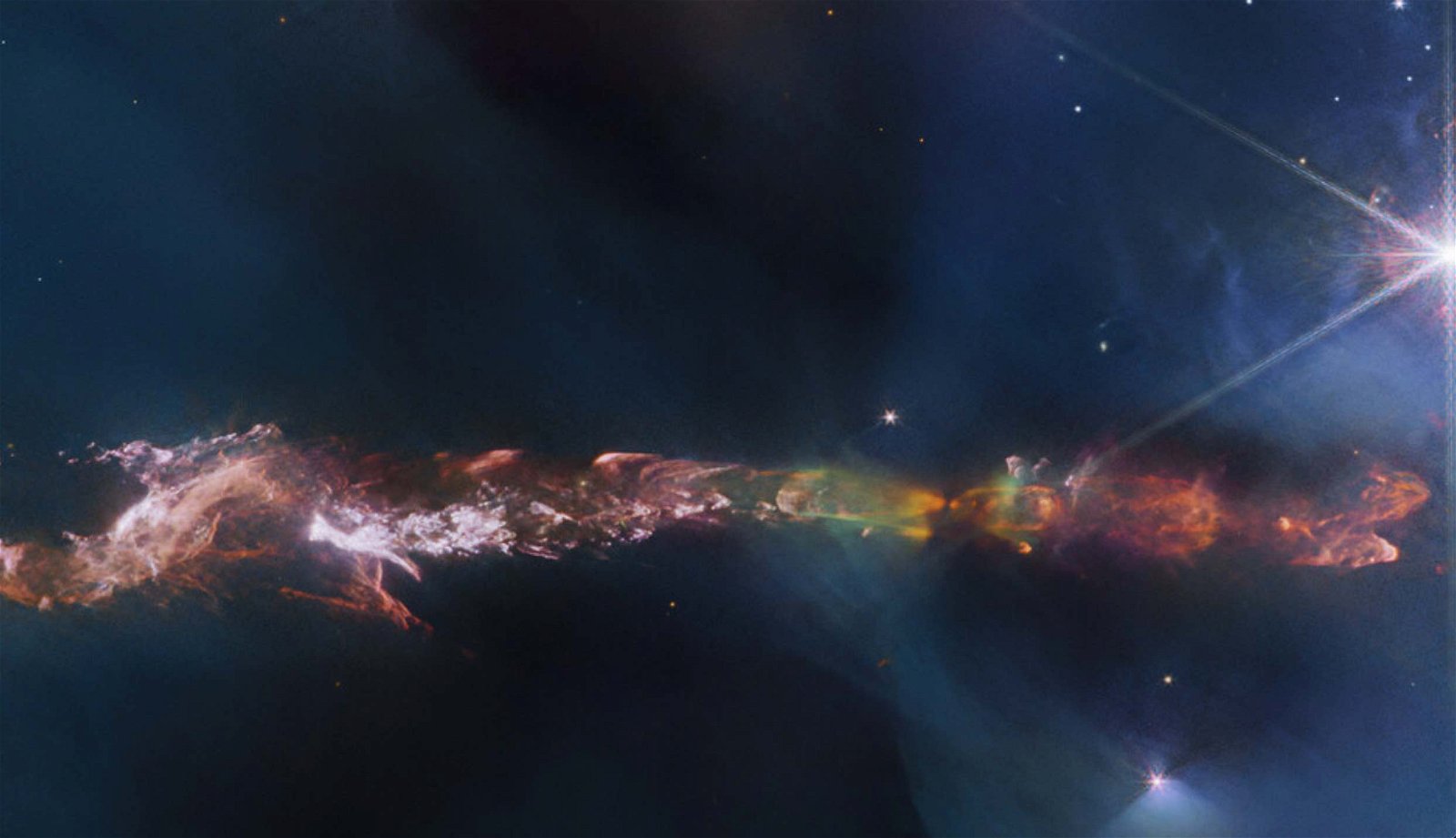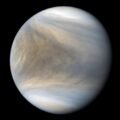NASA’s premier space science observatory, the Webb Telescope, has unveiled the complexities of a glowing region around a young star in new imagery recently showcased by the space agency that reveals a hidden surprise.
Herbig Haro objects are areas of luminous nebulosity surrounding protostars that are common features of stellar nurseries. Recently, NASA featured striking new Webb imagery of Herbig Haro object 797 (HH797), which is seen glowing amidst the shockwaves produced by the surrounding gas and particulates as they collide around it.
A neighbor to IC 348, a young open star cluster on the eastern edge of the Perseus dark cloud complex, the objects were revealed with help from Webb’s Near-InfraRed Camera (NIRCam), which allows astronomers to perceive the infrared emissions produced by the star’s outflows. The Webb Telescope NIRCam is able to peer through much of the gas and dust surrounding these objects, which obscures them from view in the normal visible spectrum.


In the new imagery, the latest in a series of similar striking views of the cosmos offered by Webb, the stormy surrounding environment of the protostar causes the excitation of hydrogen and carbon monoxide molecules, many of which reach temperatures in ranges of thousands of degrees Celcius. These highly excited molecules also produce infrared signatures that Webb is able to detect, allowing astronomers to develop a better understanding of the structure of the gaseous outflows produced by the luminous object.
In past observations aided by ground-based telescopes, cold molecular gas had also been detected around HH 797, which astronomers observed to have exhibited distinctive motion where red-shifted gas is moving away from Earth, which is mostly visible in the southern region of the object, whereas blue-shifted gas moving toward Earth is predominately to the north (associated with areas in the bottom left of the new imagery).
The velocity of the gas appears to change across the outflow, whereby gas on the eastern side of the jet becomes more red-shifted. In contrast, on the opposite side, this does not occur, all of which is suggestive of rotational movement by HH 797.
Intriguingly, the new images also reveal something new about what astronomers initially thought to have been a single outflow: in reality, there appear to be two almost parallel streams. Originally, this was thought to have been caused by the object’s rotation. However, the new data obtained by Webb reveals that rather than a single star, there are almost certainly two of them in this dark, cloudy region, each of which is producing its own outflow.
With help from the vivid imagery captured by Webb, astronomers were able to detect additional outflows even beyond the newly revealed double star, one of which can be seen emanating from a protostar near the top right center of the image, possessing bright characteristics that are vividly captured by Webb, adding to our growing understanding of the dynamics of this tumultuous stellar nursery.
You can learn more about HH 797 on NASA’s website, as well as the website of the European Space Agency(ESA).
Micah Hanks is the Editor-in-Chief and Co-Founder of The Debrief. He can be reached by email at micah@thedebrief.org. Follow his work at micahhanks.com and on Twitter: @MicahHanks.

